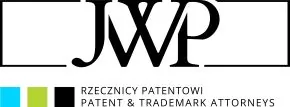At the end of 2018, an opinion of the Advocate General was issued in Case C-476/17 on the admissibility of using so-called 'samples' from the point of view of EU copyright law. We are currently waiting for the judgment of the Court of Justice of the European Union (CJEU) in this case, which will play an important role in guiding both the interpretation of current regulations and the future of contemporary music.
It goes without saying that sampling has become one of the most common elements of the contemporary music scene in recent years. What is equally true, however, is that this musical technique has also given rise to many controversies under copyright law, namely Directive 2001/29/EC of the European Parliament and of the Council of 22 May 2001 on the harmonisation of certain aspects of copyright and related rights in the information society. It was in this context that the opinion of the Advocate General of the CJEU, Maciej Szpunar, was drawn up on 12 December 2018 (Case C-476/17).
Although the opinion is not binding on the judges of the Court, it presents a number of important arguments that have long been put forward in the discussion on the copyright implications of sampling. It is worth looking at them briefly and trying to assess whether they will influence the nature of the ruling, which will be eagerly awaited by fans of genres such as hip-hop or rap. But let's start at the beginning.
What is sampling and why is it a challenge to copyright?
There is no single, official definition of sampling. In his opinion, the Advocate General described it as "the process of taking, by means of electronic equipment, a portion or sample of a phonogram for the purpose of using it as an element in a new composition in another phonogram". In lay terms, sampling involves using fragments of earlier musical works by including them in a new musical work. Sometimes samples are limited to just a few notes, but there are cases where they constitute an entire musical phrase, e.g. a fragment of a chorus or other characteristic musical theme.
Is sampling a new phenomenon in the world of music? If we simplify this phenomenon slightly and reduce it to the practice of borrowing certain musical motifs, for example from folk music, it is easy to find such 'samples' used in the works of romantic composers (e.g. Fryderyk Chopin or Stanisław Moniuszko). Other composers (e.g. Henryk Mikołaj Górecki in "Muzyka staropolska" op. 24) used fragments of earlier works in their compositions, using direct quotations of them as the basis for creating a musical dialogue.
However, the technique of contemporary sampling is a bit more complicated, as the new work contains not so much the musical motif itself, but a fragment of the phonogram, i.e. a fixed sound layer of the performance of the work. Interestingly, as the Advocate General pointed out, in such an arrangement it is necessary to balance the interests of the producer of the earlier phonogram with the interests of the author of the work in which it was used. There is therefore a confrontation between the resulting commercial product (phonogram) and the creative freedom manifested in the action of sampling. This gives rise to the question of how this situation should be assessed from the perspective of EU copyright law.
What are the important points raised in the opinion of 12 December 2018? (Case C-476/17)?
The dispute that led to the issuing of an opinion of the Advocate General and will, in the near future, result in a ruling on sampling by the Court arose from the use of a two-second excerpt from an earlier phonogram, "Metall auf Metall" by Kraftwerk, in a work entitled "Nur mir" performed by Sabrina Setlur, among others.
The circumstances of the case prompted the German national court to raise a number of relevant questions, including whether including a fragment of a phonogram in another work constitutes an infringement of the exclusive right of the producer of the original phonogram; whether the subsequent phonogram should be regarded as a copy of the earlier phonogram; and whether it is possible in this case to invoke the right of quotation even if another person's work that has been used in the new phonogram is not directly recognisable. Questions have also arisen about the limits of artistic freedom in the context of the Charter of Fundamental Rights of the European Union.
A detailed analysis of the position set out in the Advocate General's opinion is well beyond the scope of this article. However, a number of points are worth highlighting. Firstly, the opinion indicates that the protection of a phonogram fragment cannot be derived from the fact that it is deemed sufficiently original, since such a requirement applies to works, i.e. the classic subject-matter of copyright law. Phonograms are protected mainly because of the investment and organizational expenditures incurred by their producers. Moreover, a phonogram, defined by the Advocate General as a "fixation of sounds", enjoys such protection by virtue of its very fixation. Making the protection of a phonogram fragment dependent on the degree of 'originality' of the phonogram, according to the Advocate General, would therefore be contrary to the provisions of Directive 2001/29/EC and could also give rise to practical problems; for example, on the basis of which objective criteria should such a threshold for legal protection be set? Of course, one could agree that this issue could raise problems, but it is also worth noting that such a solution has been adopted in American law (under fair use). Theoretically, therefore, it would not impossible to formulate such objective criteria.
Secondly, the opinion stresses that the right to the protection of a phonogram as a right related to copyright is of a different nature and, although phonograms very often constitute a fixation of a protected work, their protection does not depend on the protection of the work itself.
With regards to the question of whether a phonogram containing samples from an earlier phonogram may be regarded as a copy thereof, the Advocate General took the view that such a phonogram constitutes an independent subject-matter of legal protection. Therefore, it should not be regarded as a copy within the meaning of Directive 2001/29/EC, since sampling does not, in principle, lead to the acquisition of all or even a substantial part of the sounds of the original phonogram. It is difficult to disagree with that view.
Finally, the opinion also addresses the issue of the possible use of the right of quotation as an exception limiting copyright protection. In particular, Article 5 of the Directive mentions the possibility of also applying this exception to phonograms. In that regard, the Advocate General pointed out that, in order to fall within the legal framework of that exception, the quoted passage should remain unchanged and recognisable in the work in which it is included. Sampling, on the other hand, very often involves the borrowed fragment being mixed and, as a result, changes its original form. In addition, when samples are very short (e.g. a two-second rhythmic sequence), it may be difficult to recognise them in the new phonogram. It was also stressed that "the aim of sampling is not to enter into dialogue with, be used for comparative purposes, or pay tribute to the works used", which could justify recourse to the right of quotation.
It seems that such a general justification in this matter can be disputed. It cannot be excluded that phonograms in which samples actually interact with the main content, for example in the textual layer, can be unchanged and so prominent in the phonogram that there are no problems with their recognition. An example of this kind of interaction could be the work "Stan" by American rapper Eminem, in which a fragment of a previously recorded Dido song called "Thank you" was used as a sample. If, in this case, the use of the sample had occurred without the consent of the producer of the earlier phonogram (and we don't know if such consent was granted or not), an attempt could have been made to invoke the right of quotation precisely because of the aforementioned interaction between the two phonograms, especially given that the full title of the discussed song indicated the artist who performed the earlier song containing the sampled phonogram ("Stan feat. Dido").
When discussing the problem of sampling from the perspective of copyright, it is also worth noting, following the opinion of 12 December 2018, that sometimes the creator of a musical work is both the performer and the producer of a phonogram. This leads to an accumulation of rights that may be vested in such an entity, which is not insignificant in the event of a potential dispute.
The Advocate General also referred to the freedom of art guaranteed by the Charter of Fundamental Rights as a possible basis for the use of sampling. However, in this case, he considered that the rights of phonogram producers should be balanced against the rights of performers or even the moral rights of authors of musical works, such as the right to their integrity. Thus, it was pointed out that "the freedom of the arts cannot guarantee the possibility of free use of whatever is wanted for creative purposes".
Where is contemporary music heading?
It is certain that the CJEU judgment, which will be handed down shortly, will resolve one of the most interesting copyright issues in recent years. At the same time, it may change the course of development of some trends in contemporary music.
If the Court's panel agrees with the Advocate General's position as set out in his opinion of 12 December 2018, there is no doubt that authors using samples will have to think about obtaining consent to use such fragments from the phonogram producer in advance. Otherwise, they may be exposed to allegations of infringement of the rights in question. We are therefore impatiently waiting to hear the final chord of this dispute to sound.
The content of this article is intended to provide a general guide to the subject matter. Specialist advice should be sought about your specific circumstances.

